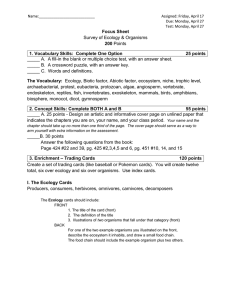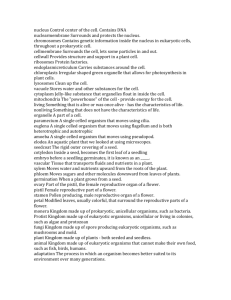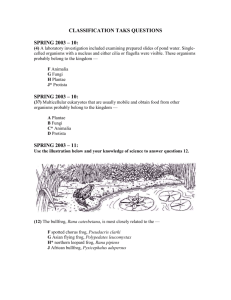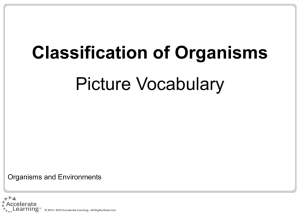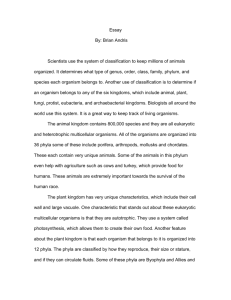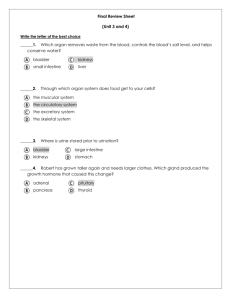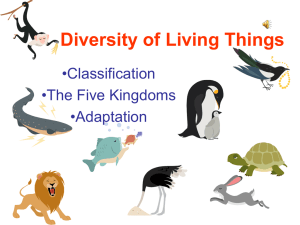The World`s Biodiversity
advertisement
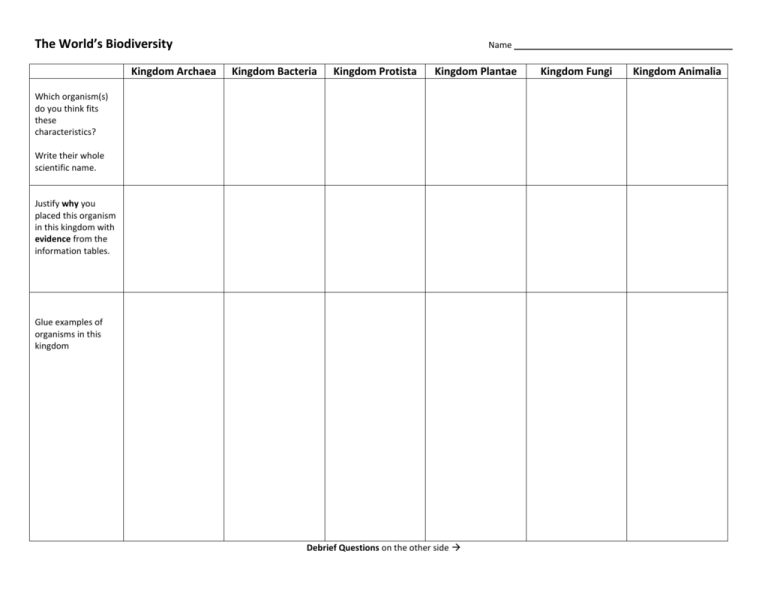
The World’s Biodiversity Kingdom Archaea Name Kingdom Bacteria Kingdom Protista Kingdom Plantae Which organism(s) do you think fits these characteristics? Write their whole scientific name. Justify why you placed this organism in this kingdom with evidence from the information tables. Glue examples of organisms in this kingdom Debrief Questions on the other side Kingdom Fungi Kingdom Animalia Debrief Questions 1. Which of the characteristics examined seems most useful to scientists grouping organisms together into their respective kingdoms? Which is the least useful? Justify both answers. 2. Fossil evidence supports that the oldest species on Earth are on the left side of the information table (Archaea, Bacteria), and become “younger” as you move to the right side of the table (Fungi, Animalia). List 2-3 trends you observe across the table (horizontally) that are displayed by the diversity of living things. 3. Consider the following 3 organisms. After your class discussion on the classification of Organisms A-O, justify your placement of each mystery organism into its kingdom. Mystery organisms Organism X: Human Immunodeficiency Virus o Small virus, slowly replicating (“reproducing”) when inside host cell. Has genetic material (RNA) surrounded by a protein coat. Obtains energy from host cell when inside and can be found in bodies and fluids of animals. Organism Y: Homo sapiens (Human Being) o Multicellular, made of eukaryotic cells that contain a nucleus, cell membrane, ribosome, mitochondria, Golgi Bodies, Endoplasmic Reticulum, lysosomes, reproduce sexually, are heterotrophic, and can be found in many different places all over Earth. Organism Z: Dionaea muscipula (Venus Fly Trap) o Multicellular, made of eukaryotic cells that contain a nucleus, cell membrane, cell wall, chloroplast, central vacuole, ribosome, mitochondria, Golgi Bodies, Endoplasmic Reticulum, perixomes. Reproduce sexually and can be found in bogs and wet grasslands. Some species of Venus Fly Trap can extract nutrition from certain bugs but are mainly autotrophic.

